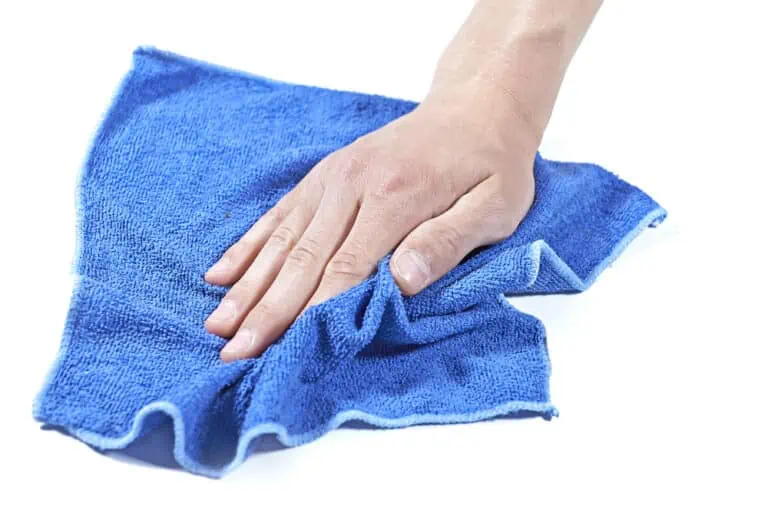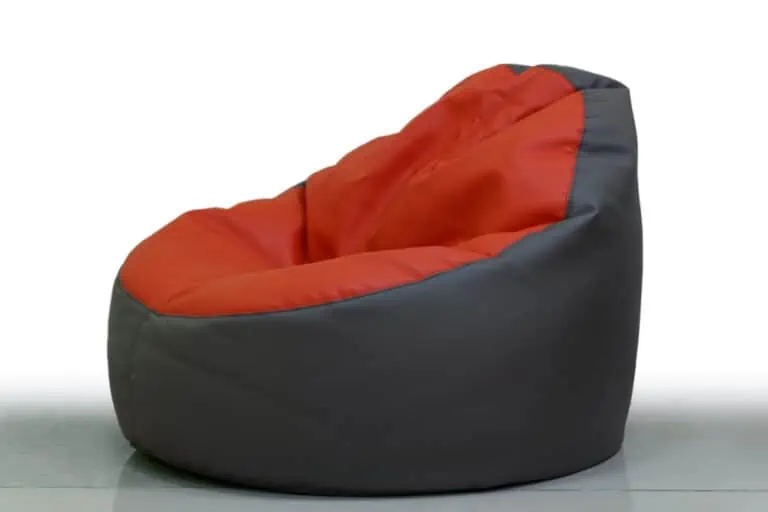Are Bean Bag Chairs Bad for Your Back? Exploring Comfort and Posture
Homebody Forever is reader-supported. We may receive a commission if you make a purchase through a link on this post.
When you’re someone who spends a lot of time in your home (like me), comfort is of the utmost importance.
And when you’re also someone who works from the space you call home 90% of the time (also me), not being comfortable can lead to back pain and less-than-ideal posture.

Now, one of my favorite aspects about working from home is the ability to switch between my desk and my bean bag. I find that sitting in the same spot for long periods of time isn’t conductive to my comfort or productivity, and can be creatively stifling.
I wonder, though, can sitting in bean bag chairs (for over a short time) be bad for your back?
Key Takeaway: The short answer is it depends. Bean bag chairs can provide good support and help reduce back pain, provided you get one with an ergonomic design. On the other hand, some bean bags might encourage you to sit in a way that isn’t great for your posture and can exacerbate back pain.
Ultimately, you can minimize back pain by selecting one with the right level of support for your body and paying attention to your sitting posture to reduce discomfort and back strain.
In this article, we’ll cover how bean bags can be good (and bad) for your back, explore different designs to figure out what might work for you, and consider other options to find the perfect balance between comfort and back support.
Why a Bean Bag Can Hurt or Help Your Back
Sitting on a bean bag chair can be good or bad for your back, depending on factors like how you sit and the quality of your bean bag. Slouching, for example, can cause spinal misalignment, which can lead to pain and discomfort.
On the other hand, sitting on a 135-degree lean (which bean bags allow you to do) can prevent back pain because this position is the least likely to cause spinal misalignment.
A bean bag can help your back if you get one that conforms to your body shape, which leads to an evenly distributed body weight. This helps reduce pressure points and supports your back.
Some low-quality bean bag, however, doesn’t exactly conform to your body shape and provides little cushion as the bead shifts when you sit on it. This can lead to discomfort and potentially strain your back muscles.
One way to get around this is to invest in a bean bag with good quality filling that provides your body with adequate support. A good option for an ergonomically friendly bean bag chair is a Moon Pod.
How long you sit on your bean bag can also impact how you feel. One of the reasons why I switch between bean bags and my desk is because sitting in either positions for too long always makes me dang uncomfortable.
When I switch between two sitting positions, I notice that I have the tendency to pay more attention to my posture. Also, changing positions forces me to stand and walk around regularly, which is just good practice for the desk-dwellers among us.


Additional Factors That Impact Back Pain
Of course, it’s important to note that the type of seating you choose—while important—isn’t the only thing that contributes to back pain. Here are other things that can impact your risk (and likelihood) of getting back pain:
Age
As you get older, your risk of developing back pain increases. Age-related changes such as degeneration of the discs, reduced muscle tone, and poor bone health can contribute to discomfort.
Lack of exercise and strength training
Speaking of bone health and lack of muscle tone, there’s a perception out there that it’s just a natural consequence of aging.
Now, it is true that you start to lose muscle mass you turn 30, according to an article from Harvard Health Publishing, but it is also true that you can slow this down (or exacerbate it) by regularly (or not regularly) exercising and strength training.
Excess weight
Carrying extra body weight has the potential to put added stress on your spine, which can lead to a ruptured disc and cause back pain.
Poor posture
Sitting or standing in a slouched or hunched position can negatively impact your spine and lead to back pain.
Stress
When you experience stress, it can lead to prolonged tension in your muscles, which can cause or worsen back pain, specifically in your lower back.
What to Look for in a Bean Bag
Now that you know the other factors that contribute to back pain, how do you go about buying a bean bag that is the least likely to cause you back pain?
First, you’ll want to consider the filling. Traditional polystyrene beads can be less comfortable and supportive than other options. Bean bags filled with shredded memory foam, for example, molds to your body shape, making it more comfortable (and supportive) for your back.
Next, look for bean bag chairs with an ergonomic design. Some bean bags are specifically designed to offer better support for your back, like this sack-like bean bag that Insider recommends.

Related: Tips for cleaning your bean bag
What to Avoid in a Bean Bag
In addition to knowing what to look for when buying a bean bag, it’s also worth noting what you should avoid next time you go bean bag shopping.
First, avoid bean bags that are too small for your body size. A bean bag that doesn’t provide ample room to sit properly can cause discomfort and strain on your back and will just be unpleasant and uncomfortable. Why would you want that?
Second, pay attention to the shape of the bean bag. If you’re planning to spend long periods of time in your bean bag (and why wouldn’t you?), try to stay away from shapeless or structure-less bean bags.
Finally, keep an eye on the bean bag’s cover material. Okay, this one doesn’t technically have anything to do with your back, but having an itchy bean bag really takes the joy out of sitting in one. Instead, go for smooth, soft, and breathable materials like cotton, suede, or a high-quality polyester blend.
Bean bags can be good or bad for your back, depending on the design, your sitting posture, and other lifestyle factors that may prevent (or worsen) back pain. If you love bean bags as much as I do, the best thing you can do is invest in one with good materials and supportive structure, and do all you can to maintain a healthy and active lifestyle.






